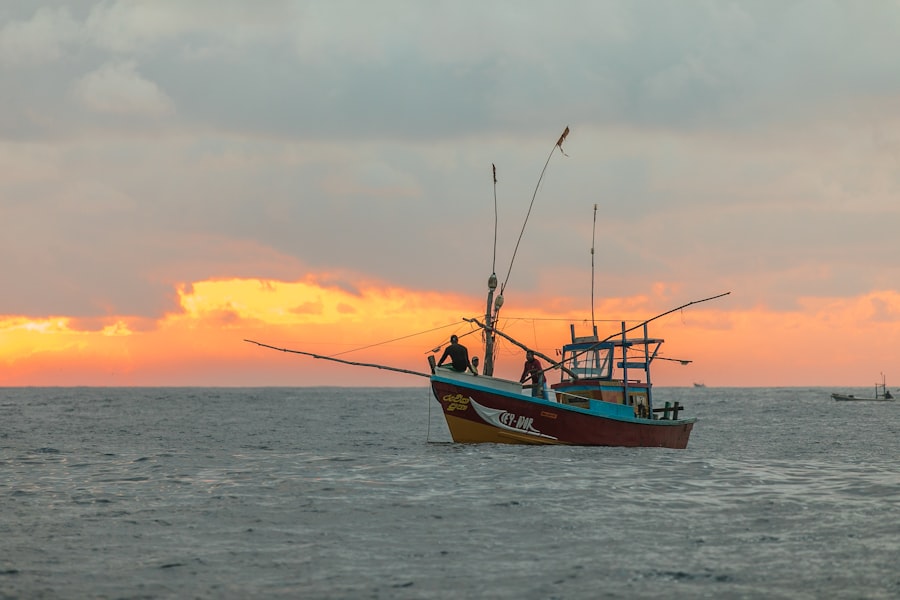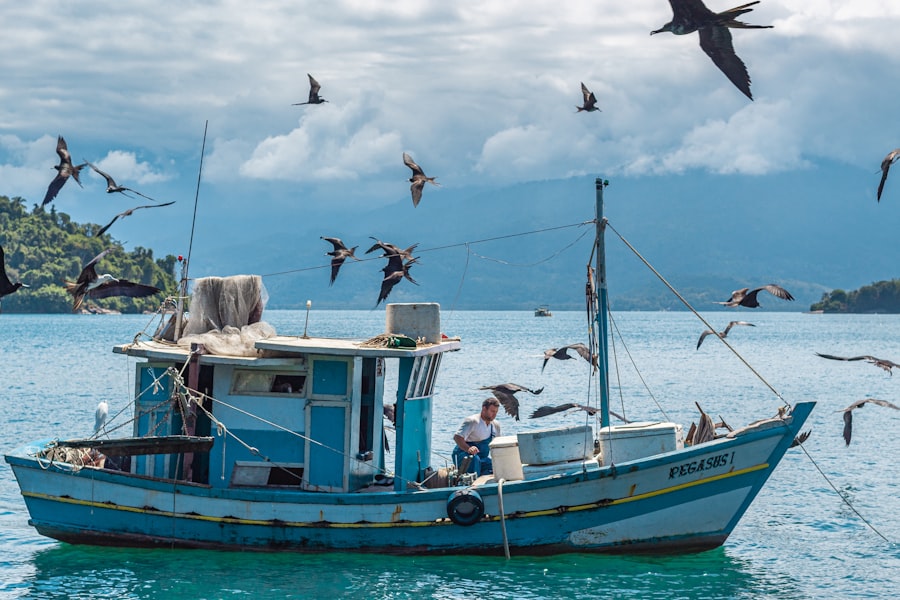Download links
How to install Aceph Online: Mastering the Art of Fishing APK?
1. Tap the downloaded Aceph Online: Mastering the Art of Fishing APK file.
2. Touch install.
3. Follow the steps on the screen.
Description
Aceph Online is an innovative platform that has emerged as a significant player in the realm of online fishing simulations and community engagement. It offers a unique blend of realistic fishing experiences, educational resources, and social interaction among fishing enthusiasts. The platform caters to both novice anglers and seasoned veterans, providing tools and features that enhance the fishing experience.
Users can engage in virtual fishing expeditions, participate in tournaments, and share their catches with a vibrant community. The immersive nature of Aceph Online allows users to explore various fishing environments, from tranquil lakes to turbulent oceans, all while honing their skills and knowledge about the sport. The platform’s design is user-friendly, making it accessible to individuals of all ages and skill levels.
With a focus on realism, Aceph Online incorporates detailed graphics and physics that mimic real-world fishing conditions. This attention to detail not only enhances the gaming experience but also serves as an educational tool for those looking to improve their fishing techniques. By simulating various fishing scenarios, Aceph Online provides users with the opportunity to learn about different fish species, their habitats, and the best practices for catching them.
As a result, it has become a go-to resource for anyone interested in the art of fishing, whether for leisure or competition.
Key Takeaways
- Aceph Online is a comprehensive platform for learning about fishing, from the basics to advanced techniques.
- The basics of fishing include understanding the equipment, bait, and different types of fishing techniques.
- Advanced fishing techniques cover topics such as fly fishing, trolling, and deep-sea fishing.
- Understanding fish behavior is crucial for successful fishing, including knowing their feeding habits and preferred habitats.
- Selecting the right fishing gear involves choosing the appropriate rod, reel, line, and tackle for the type of fishing and target species.
The Basics of Fishing
Fishing is an age-old practice that combines skill, patience, and an understanding of aquatic ecosystems. At its core, fishing involves the pursuit of fish for food, recreation, or sport. The fundamental techniques of fishing can be broken down into several key components: understanding the types of fishing, selecting appropriate bait, and mastering basic casting techniques.
Each of these elements plays a crucial role in determining the success of a fishing trip. There are various types of fishing methods, including freshwater fishing, saltwater fishing, fly fishing, and ice fishing. Freshwater fishing typically occurs in lakes, rivers, and ponds, targeting species such as bass, trout, and catfish.
Saltwater fishing takes place in oceans and seas, where anglers pursue larger species like tuna and marlin. Fly fishing is a specialized technique that uses artificial flies as bait to attract fish, often practiced in rivers and streams. Ice fishing involves drilling holes in frozen bodies of water to catch fish during winter months.
Understanding these different methods is essential for anglers to choose the right approach based on their location and target species. Selecting the right bait is another fundamental aspect of successful fishing. Live bait such as worms, minnows, or insects can be highly effective in attracting fish due to their natural movement and scent.
Artificial lures, on the other hand, come in various shapes, sizes, and colors designed to mimic the appearance and behavior of prey. Each type of bait has its advantages and disadvantages depending on the species being targeted and the fishing environment. Mastering basic casting techniques is equally important; a well-executed cast can make all the difference in placing bait where fish are likely to be feeding.
Advanced Fishing Techniques

Once an angler has grasped the basics of fishing, they may wish to delve into more advanced techniques that can significantly enhance their success on the water. Techniques such as trolling, jigging, and using downriggers are just a few examples of methods that experienced anglers employ to increase their catch rates. Each technique requires a deeper understanding of fish behavior and environmental conditions.
Trolling involves pulling baited lines behind a moving boat at varying speeds. This method allows anglers to cover large areas of water efficiently while enticing fish that are actively feeding. Trolling can be particularly effective for targeting species like salmon or walleye that tend to roam in search of food.
Anglers often use multiple lines with different lures or baits at varying depths to increase their chances of attracting fish. Understanding how to adjust speed and depth based on water temperature and fish activity is crucial for successful trolling. Jigging is another advanced technique that involves using a weighted lure called a jig to mimic the movement of prey.
Anglers drop the jig to the desired depth and then use a series of upward jerks followed by letting it fall back down to create an enticing motion that attracts fish. This technique is particularly effective for species like bass and pike that are known to strike at fast-moving targets. Mastering jigging requires practice in timing and rhythm to ensure that the lure mimics natural prey behavior effectively.
Understanding Fish Behavior
| Fish Behavior Metrics | Measurement |
|---|---|
| Swimming Speed | cm/s |
| Feeding Frequency | times/day |
| Schooling Behavior | yes/no |
| Territorial Aggression | scale of 1-5 |
A critical component of successful fishing lies in understanding fish behavior. Fish are influenced by various factors such as water temperature, light conditions, and seasonal changes, all of which affect their feeding patterns and habitat preferences. By gaining insight into these behaviors, anglers can make informed decisions about when and where to fish.
Water temperature plays a significant role in determining fish activity levels. Most fish species have preferred temperature ranges that dictate their feeding habits. For instance, bass tend to be more active in warmer waters during spring and summer months when they are spawning.
Conversely, during colder months, fish may become lethargic and less likely to bite. Understanding these seasonal patterns allows anglers to plan their trips accordingly and target species when they are most likely to be feeding.
Fish are more likely to feed during dawn and dusk when light levels are lower, making them feel safer from predators. Additionally, cloudy days can enhance feeding activity as fish feel less exposed to potential threats from above. Anglers who pay attention to these environmental cues can optimize their chances of success by timing their outings around these peak feeding periods.
Selecting the Right Fishing Gear
Choosing the appropriate fishing gear is essential for maximizing success on any fishing trip. The right combination of rod, reel, line, and tackle can make a significant difference in an angler’s ability to catch fish effectively. Each component serves a specific purpose and should be selected based on the type of fishing being pursued.
Fishing rods come in various lengths and actions designed for different techniques and species. A longer rod may provide better casting distance for surf fishing, while a shorter rod may offer more control for precision casting in tight spaces like rivers or streams. The action of the rod—whether fast, medium, or slow—determines how much flex it has when pressure is applied.
Fast action rods are ideal for quick hook sets when targeting species like bass that strike aggressively. Reels also vary widely in design and functionality. Spinning reels are popular among beginners due to their ease of use and versatility across various fishing styles.
Baitcasting reels offer greater control over line management but require more skill to operate effectively. Selecting the right line is equally important; monofilament lines are often favored for their stretch and ease of handling, while braided lines provide increased sensitivity and strength for targeting larger species. Tackle selection encompasses hooks, weights, lures, and other accessories tailored to specific fishing scenarios.
The choice of hook size should correspond with the bait being used and the target species’ mouth size. Weights help control bait depth in moving water or when casting long distances. Lures should mimic local prey species in color and movement to entice fish effectively.
Tips for Successful Fishing Trips

To ensure a successful fishing trip, preparation is key.
Understanding local rules helps avoid fines while ensuring sustainable practices are followed.
Packing essential gear is another critical aspect of preparation. In addition to rods and reels, anglers should bring along tackle boxes filled with various lures and baits suited for their target species. A first-aid kit is also advisable for addressing minor injuries that may occur during outings.
Additionally, bringing along snacks and plenty of water can enhance comfort during long days on the water. Finally, maintaining patience and adaptability is vital for any angler’s success. Fishing often requires waiting for extended periods without immediate results; however, staying focused on technique can lead to eventual success.
If one method isn’t yielding results, being willing to change tactics—whether it’s switching bait types or moving locations—can make all the difference in achieving a successful catch. By combining knowledge of fish behavior with appropriate gear selection and advanced techniques, anglers can significantly improve their chances of having rewarding experiences on their fishing trips.
If you’re looking for a fun and relaxing activity to do online, why not try online fishing? Aceph has a great article on the benefits of online fishing and how it can help you unwind after a long day. Check out the article here for more information.
FAQs
What is aceph Online fishing?
aceph Online fishing is an online platform that allows users to participate in virtual fishing experiences. Users can access the platform through a web browser or mobile app and engage in fishing activities from the comfort of their own home.
How does aceph Online fishing work?
aceph Online fishing uses virtual reality technology to simulate the experience of fishing. Users can choose from a variety of fishing locations, select their equipment, and cast their lines to catch virtual fish. The platform also includes features such as leaderboards, tournaments, and social interactions with other users.
What equipment do I need for aceph Online fishing?
To participate in aceph Online fishing, users will need a compatible device such as a computer, smartphone, or virtual reality headset. Some features may require additional accessories such as a fishing rod controller or motion sensors for a more immersive experience.
Is aceph Online fishing suitable for all ages?
aceph Online fishing is designed to be a family-friendly experience and is suitable for users of all ages. The platform offers a variety of fishing locations and difficulty levels, allowing users to tailor their experience to their skill level and preferences.
Are there any costs associated with aceph Online fishing?
aceph Online fishing may offer both free and paid features. Some aspects of the platform, such as basic fishing experiences and social interactions, may be available at no cost. However, premium features, additional equipment, or in-game purchases may require payment.
Is aceph Online fishing environmentally friendly?
aceph Online fishing provides a virtual alternative to traditional fishing, which can help reduce the impact on natural ecosystems and fish populations. By participating in virtual fishing experiences, users can enjoy the sport of fishing without contributing to environmental concerns such as overfishing or habitat destruction.





